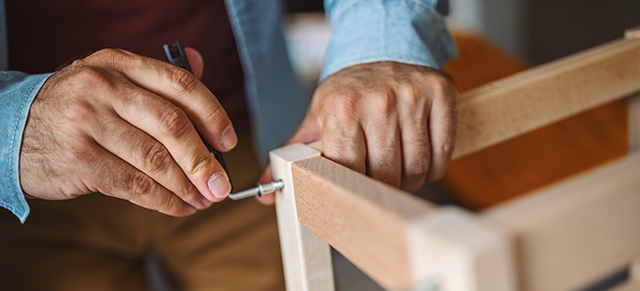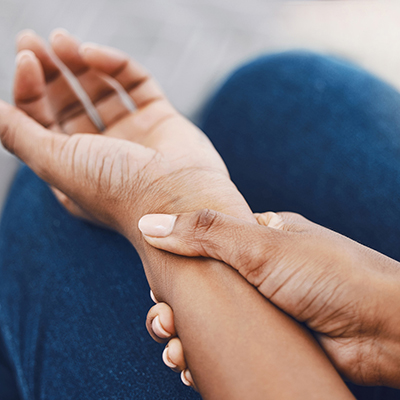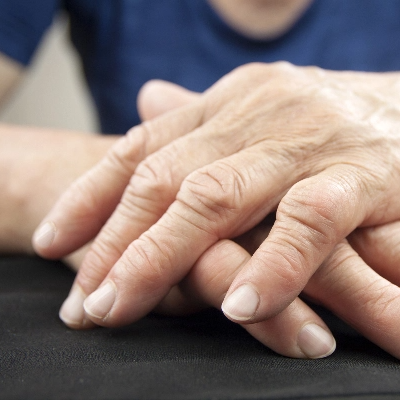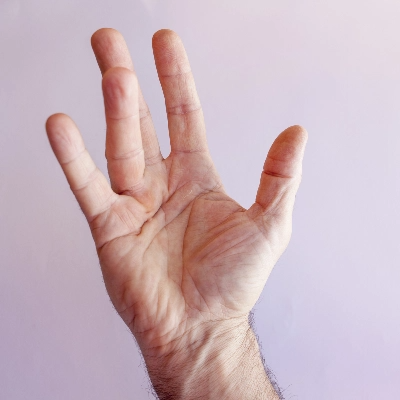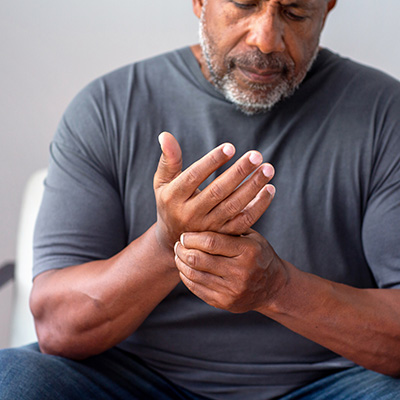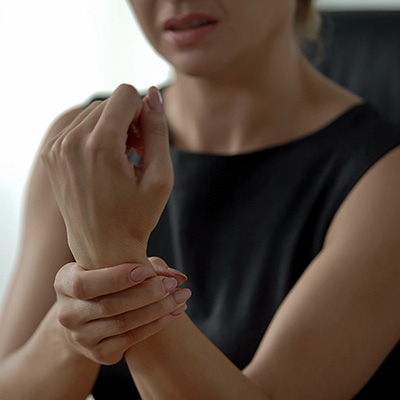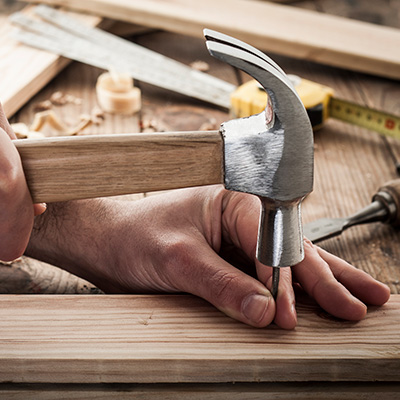You’re in good hands here.
We live our lives through our hands, and this is where our work begins. Trusted by MaineHealth Maine Medical Center Portland and Biddeford campuses and Northern Light Mercy Hospital for nearly 40 years, we are the most skilled surgical team that offers a comprehensive range of advanced procedures and treatments to address various hand conditions. Hand surgery procedures treat traumatic and post-injury problems, carpal tunnel, osteoarthritis, tendonitis, ganglion cysts, and congenital abnormalities. We also have onsite occupational therapy to prevent further injury, decrease pain, and maximize function. With customized treatment plans that bring you from diagnosis to recovery, we can help.
IMPROVED HAND FUNCTIONALITY HELPS YOU WORK AND LIVE LIKE YOU DESERVE.
WHAT TYPES OF HAND TREATMENT DO YOU OFFER?
Trusted most in the region, the Maine Hand Center at Plastic + Hand provides the most comprehensive hand surgery and hand treatment options in Maine, including:
- Carpal tunnel release
- Osteoarthritis
- Dupuytren’s contracture
- Trigger finger
- Distal radius fractures
- Nerve surgery (compression, trauma)
- Fingertip injuries
- Workplace injuries/workman’s comp injuries
- Trauma: fractures, nerve injuries, tendon injuries
Our Plastic + Hand team has the most qualified hand surgeons in Maine. Not only have we successfully completed the most reconstructive procedures in the region, but our team is also the only plastic surgery team trusted by MaineHealth Maine Medical Center Portland and Biddeford campuses and Northern Light Mercy Hospital.
Plastic + Hand surgeons perform reconstructive and emergency hand surgery procedures in order to improve hand function. Hand surgery procedures include treatment of traumatic and post-injury problems, osteoarthritis, tendonitis, ganglion cysts, and congenital abnormalities. Our experienced surgeons also treat the most complex conditions of the hand that affect the nerves, bones, tendons, and skin.
With training from some of the top medical centers in the U.S. (including Harvard, Yale, Stanford, UCSF, Mayo Clinic), Plastic + Hand surgeons have the depth of experience and skills necessary to perform your hand surgery safely and successfully in the comfort of our accredited outpatient Plastic + Hand Surgery Center located on-site here in Portland, Maine.
In many cases, surgery is just the start of recovery, and intensive rehabilitation may be necessary to increase hand strength and function. That’s why Plastic + Hand includes occupational therapists as important members of our team to provide treatment for patients with hand injuries.
DO YOU PERFORM MICROSCOPIC SURGERY?
At the Maine Hand Center at Plastic + Hand, all our surgeons are trained in microscopic surgery, making the repair of small nerves and blood vessels in the hand possible.
WHERE DO YOU PERFORM HAND SURGERY?
With training from some of the top medical centers in the U.S. (including Harvard, Yale, Stanford, UCSF, Mayo Clinic), Plastic + Hand surgeons have the depth of experience and skills necessary to perform your hand surgery safely and successfully in the comfort of our accredited outpatient Plastic + Hand Surgery Center located on-site here in Portland, Maine.
HOW ARE HAND ISSUES DIAGNOSED?
At the Maine Hand Center at Plastic + Hand, we start this process by listening. We ask patients about their symptoms and what is bothering them in their hands. The surgeon will perform a thorough evaluation, first asking about your health and family history, followed by a physical examination that may sometimes involve imaging tests (i.e., X-rays, CT Scan, or MRI) or nerve tests (i.e., Electromyography (EMG) or Nerve Conduction Study (NCS). This in-depth evaluation helps determine the most appropriate treatment plan.
DO YOU OFFER HAND OCCUPATIONAL THERAPY?
In many cases, surgery is just the start of recovery, and intensive rehabilitation may be necessary to increase hand strength and function. That’s why Plastic + Hand includes occupational therapists as important members of our team to provide treatment for patients with hand injuries. Our occupational therapists aim to prevent further injury, decrease pain, and maximize function with specialized treatment plans, exercises, braces, and splints.
DO YOU PERFORM INJECTIONS FOR HAND AND WRIST PAIN?
If the surgeon agrees that injections are the best course of action, steroid shots in your afflicted area can provide tremendous relief for about six months. Plastic + Hand uses X-rays to offer injections under fluoroscopy to ensure these steroids are injected perfectly into the affected areas. We also have ultrasound technology.
DO I NEED TO SEE ANOTHER PROVIDER FIRST?
The Maine Hand Center at Plastic + Hand is your first and only stop for your comprehensive hand treatment plan. Of course, if you have a traumatic injury, you may have seen the Emergency Department as the first step in your medical care.
DOES INSURANCE COVER HAND TREATMENT?
You’ll first discuss your surgery or care plan with your Plastic + Hand surgeon. During your initial consultation, your surgeon will evaluate your medical history, your hand symptoms, and discuss the most appropriate hand treatment for your diagnosis. After this personalized consultation, our scheduling and pre-authorization team will work with you and your insurance company to ensure the procedure is covered and scheduled in a timely manner.
HOW DO YOU TREAT CARPAL TUNNEL SYNDROME?
Many patients with carpal tunnel syndrome experience numbness and tingling in the affected (thumb, index, middle) fingers, hand pain, and muscle weakness in the thumb, all contributing to a lack of dexterity.
While some patients try to avoid surgery (i.e., relying on self-instructed splinting), chronic carpal tunnel can cause permanent nerve damage if you let it go long enough, which is not fixable.
The Maine Hand Center at Plastic + Hand specializes in endoscopic carpal tunnel release and open carpal tunnel release, the most effective ways to treat carpal tunnel syndrome.
Carpal tunnel release surgery relieves pressure on your median nerve and reduces pain and numbness through releasing (cutting) the transverse carpal ligament. There are two surgical options to treat carpal tunnel syndrome:
Endoscopic carpal tunnel release
During endoscopic carpal tunnel release surgery, your surgeon will make one small incision in the palm. He/she will guide the small endoscope (camera) and surgical tools into the incision. Live video from inside the hand guides the surgeon’s ability to release the transverse carpal ligament.
The actual endoscopic carpal tunnel release surgery takes about 8-10 minutes and is virtually pain-free. Patients will typically have two stitches and a band-aid on the surgical site, and you can move and use your hand afterward right away.
Open carpal tunnel release
In open carpal tunnel release, the surgery is done through one incision in the palm. The surgeon views and operates on the transverse carpal ligament through the incision.
Depending on the severity of your carpal tunnel syndrome and the procedure (open or mini-open) that is best for you, your surgeon will discuss your specific recovery timeline and post-op details.
If patients cannot get carpal tunnel release surgery immediately, the Plastic + Hand surgeon may recommend a steroid shot, medications, or splint-wearing to ease the symptoms temporarily. You will discuss your options directly with the surgeon in your initial consultation.
HOW DO YOU TREAT OSTEOARTHRITIS?
Our Maine Hand Center at Plastic + Hand team specializes in osteoarthritis diagnosis and care.
Osteoarthritis is a degenerative joint disease where the tissues in the joint break down over time. As people lose cartilage, they lose the smooth surfaces around their joints. As bones and joints make contact, it causes pain, swelling, and inflammation.
Osteoarthritis affects each person differently. While osteoarthritis is relatively mild and does not affect day-to-day activities for some people, it causes significant pain and disability for others. At the Maine Hand Center at Plastic + Hand, we offer the full spectrum of non-surgical and surgical hand arthritis treatment and thumb arthritis treatments to best address your diagnosis and needs.
While there is no cure and no one-size-fits-all solution for osteoarthritis, there are many treatment options, depending on where you are in this disease progression. At Plastic + Hand, we focus on maximizing function and minimizing pain as conservatively as possible since this is a chronic condition. Once these conservative approaches no longer address your status, our team works with you on the next recommended treatment level.
Osteoarthritis treatment has a wide spectrum, and Plastic + Hand offers all stages, often beginning with conservative and non-operative care:
- Occupational Therapy: Our Plastic + Hand team includes occupational therapists as important team members to provide critical treatment for patients with osteoarthritis. Our therapists aim to prevent further injury, decrease pain, and maximize function with specialized treatment plans, exercises, braces, and splints.
- Medications: Anti-inflammatory over-the-counter medications and natural remedies like turmeric can help with pain management.
Once these early treatments stop being effective, patients often move on to the next stage:
- Injections: Steroid shots in your afflicted joint can provide tremendous relief for about six months. Plastic + Hand uses X-rays to offer injections under fluoroscopy to ensure these steroids are injected perfectly into the affected areas. We also have ultrasound technology.
Many patients will get repeat injections over time for their symptoms, and while it’s very simple, effective, and incredibly risk-free, osteoarthritis will continue to worsen over time. It is important for patients to know that non-proven treatments and injections (which also always seem to have very expensive out-of-pocket costs) are not endorsed by the surgeons at Plastic + Hand.
Once all non-surgical treatments can no longer handle the disease progression (or touch the pain), patients and the surgeon will discuss options for the next stage of osteoarthritis treatment:
- Surgery: There are several types of surgeries for osteoarthritis, including joint reconstruction, joint replacement, fusion, or partial fusion. Depending on your specific diagnosis, your Plastic + Hand surgeon will discuss the various surgical options that will be most appropriate for you.
HOW DO YOU TREAT DUPUYTREN’S CONTRACTURE?
Dupuytren’s contracture symptoms can often interfere with hand function, making it difficult for some people to perform daily activities. The Maine Hand Center at Plastic + Hand offers non-surgical and surgical treatments to best address your diagnosis and needs.
Dupuytren’s disease is a condition that affects the palmar fascia, the fibrous layer of tissue that lies underneath the skin in the palm and fingers. The palmar fascia forms a protective barrier between the skin and tendons (cordlike fibers that connect muscle to the bone) and gives the palm a flexible firmness.
Dupuytren’s disease causes the fascia to thicken and tighten over time, causing the fingers to be pulled inward towards the palm, resulting in a “Dupuytren’s contracture.” Nodules (small hard knots) may form just under the skin near the base of the fingers, and hard bands may also form across the palm. These nodules, bands, and contracting palmar fascia make the fingers bend toward the palm. There may also be pitting on the surface of the palm as the diseased tissue pulls on the overlying skin.
While there is no cure for Dupuytren’s contracture, the condition is not dangerous. However, Dupuytren’s contracture treatment can slow the disease or help ease your symptoms. Plastic + Hand offers different options depending on where you are in this disease progression and what the surgeon recommends as the most appropriate treatment.
These Dupuytren’s contracture treatment options may include:
- Steroid shot injections: These may help ease the pain if a lump is painful and help break apart the thickened tissue. While a corticosteroid injection (or repeated injections) may slow the progression of Dupuytren’s contracture in some cases, the effectiveness of this injection varies from patient to patient.
- Xiaflex (collagenase) injections: If the contracture interferes with hand function, the Plastic + Hand surgeon may recommend injection of a medication called Xiaflex (collagenase) that helps dissolve the thickened tissue in the 2-3 spots where it is injected. Xiaflex can help loosen up the hand and improve motion. As compared to surgery, the recovery is shorter, but the results are generally less complete and shorter-lasting.
- Dupuytren’s contracture surgery: If the contracture interferes with hand function, the Plastic + Hand surgeon may recommend surgical treatment to help reduce the contracture and improve motion in the affected fingers.
HOW DO YOU TREAT TRIGGER FINGER?
While trigger finger symptoms often start gradually without a clear injury, trigger finger may also result from heavy or extensive hand use, notably pinching and grasping activities. In severe trigger finger, the digit locks and gets stuck in a bent position. In the worst cases, this digit can’t be straightened without medical help.
The Maine Hand Center at Plastic + Hand offers different options depending on where you are in this trigger finger progression and what the surgeon recommends as the most appropriate treatment.
These trigger finger treatment options may include:
Non-surgical treatment: Often the initial treatment for trigger finger, these options vary:
- Rest
- Splinting
- Over-the-counter medications: Acetaminophen and nonsteroidal anti-inflammatory drugs (NSAIDs) can help relieve pain and inflammation.
- Exercises: Our occupational therapists are specialized in providing gentle stretching exercises that can help decrease stiffness and improve the range of motion in the involved digit.
- Steroid shot injections: These may help ease the inflammation, and you might need repeated injections. While a corticosteroid injection may resolve the condition, the effectiveness of this injection varies from patient to patient.
If these non-surgical treatments do not work for you, or stop working as this condition progresses, your Plastic + Hand surgeon may recommend trigger finger surgery. The need for surgery will depend on the amount of pain and lost function you have in your digit. For example, a stuck digit that cannot be straightened with gentle manipulation will likely need surgery to prevent permanent stiffness.
HOW DO YOU TREAT DISTAL RADIUS FRACTURES?
While a distal radius fracture (broken wrist) can vary greatly in its nature and severity, the goal is the same. Treatment must put the broken pieces back into position and prevent them from moving until they are healed.
While the most common cause of a distal radius fracture is a fall onto an outstretched arm, it is a common injury for all ages. In young people with healthy bones, severe trauma can break a wrist. Distal radius fractures may result from high-energy incidents like a car crash or bike fall. In older people, a distal radius fracture can happen from a simple fall on the wrist (including from a standing position), especially if they have osteoporosis. These types of injuries are especially common in Maine during the snowy and icy parts of the year.
Plastic + Hand offers different treatment options depending on the severity of the distal radius fracture, the nature of the fracture, and the patient’s unique makeup, like age and activity level.
The goal of distal radius fracture treatment is to put the broken pieces back into position and prevent them from moving until they are healed. This can be done in two paths, depending on what the surgeon feels is most appropriate.
These include:
Non-surgical treatment:
- A cast: This may be a good option if the broken bone is in a good position.
- Closed reduction: If your broken bone is out of place and limits your arm usage, your doctor can realign the broken bone fragments without surgery.
- Splint/cast: Once the bone is aligned properly, a splint or cast can help keep the bones aligned.
- Occupational therapy: Our Plastic + Hand occupational therapists are specialized in providing gentle stretching exercises to help improve the motion and function of the injured wrist.
- X-rays: Frequent X-rays can show how your fracture is progressing. If the bone(s) become poorly aligned, your surgeon may recommend surgery.
- Surgical treatment: If the position of the bone cannot be corrected with a closed reduction, a cast, or other non-surgical methods, the distal radius fracture is at risk of healing with bad alignment, which can result in poor arm function. Often, surgery is the best way to correct the fracture and hold it in place while it heals.
HOW DO YOU TREAT FINGER INJURIES?
We interact with the world with our fingertips, so finger injuries are common (and painful) traumas.
Our Plastic + Hand team specializes in finger injuries, trained specifically in soft tissue injuries. After some finger injuries, it can be difficult to reconstruct a finger that is usable, free of pain, durable, and has preserved sensation, but it’s what we excel at. While function is always the top goal, we’re also dedicated to restoring the normal aesthetic appearance of the finger for the self-confidence you deserve.
Finger injury is a broad topic with many variables, so we will outline the primary details here and provide you with your customized treatment plan in our office.
Trusted by MaineHealth Maine Medical Center Portland and Biddeford campuses and Northern Light Mercy Hospital for nearly 40 years, we are the most skilled surgical team that offers a comprehensive range of advanced procedures and treatments to address various hand and finger conditions. Through an in-depth evaluation and physical examination (that may sometimes involve imaging and nerve tests), our Plastic + Hand team ensures you will have the most appropriate treatment plan for your finger injury.
DO YOU OFFER NERVE SURGERY (COMPRESSION, TRAUMA)?
Our Plastic + Hand team specializes in nerve surgery and treatment for anatomic abnormalities (like compression) and nerve injuries.
Nerve compression and nerve injury are wide-ranging topics with many components, so we will keep the information simple here and provide you with your customized treatment plan in our office.
Trusted by MaineHealth Maine Medical Center Portland and Biddeford campuses and Northern Light Mercy Hospital for nearly 40 years, we are the most skilled surgical team that offers a comprehensive range of advanced procedures and treatments to address various nerve conditions. Through an in-depth evaluation and physical examination (that may sometimes involve imaging and nerve tests), our Plastic + Hand team ensures you will have the most appropriate treatment plan for your nerve condition.
HOW DO YOU TREAT TRAUMATIC INJURIES?
Our Plastic + Hand team is trained in all aspects of hand surgery. We specialize in treating fractures, nerve injuries, tendon injuries, and soft tissue injuries. With the skill and knowledge of an orthopedic hand surgeon and the attention to detail of a plastic surgeon, we offer the most complete approach to your traumatic injury. While function is always the top goal, we’re also dedicated to restoring the normal aesthetic appearance of the hand for the self-confidence you deserve.
Since traumatic injury is a wide-ranging topic with many factors, we will give you a basic overview here and provide you with your customized treatment plan in our office.
Trusted by MaineHealth Maine Medical Center Portland and Biddeford campuses and Northern Light Mercy Hospital for nearly 40 years, we are the most skilled surgical team that offers a comprehensive range of advanced procedures and treatments to address various traumatic hand and wrist conditions. Through an in-depth evaluation and physical examination (that may sometimes involve imaging and nerve tests), our Plastic + Hand team ensures you will have the most appropriate treatment plan for your traumatic hand, wrist, or tendon injury.
HOW DO YOU TREAT WORKPLACE INJURIES?
Trusted by MaineHealth Maine Medical Center Portland and Biddeford campuses and Northern Light Mercy Hospital for nearly 40 years, our Plastic + Hand team takes care of the most hand- and wrist-related workplace injuries in Maine.
Workplace accidents happen, and work-related injuries can impact your ability to work and live like you need to. Dedicated to restoring the function and appearance of your hands, fingers, and wrists, our Maine Hand Center at Plastic + Hand team helps you get back to where you need to be.
Workplace injury is a wide topic with many considerations, so we will give you a general overview here and provide you with your customized treatment plan in our office.
As the leading surgical team in the region, we offer a comprehensive range of advanced procedures and treatments to address various hand and wrist work-related injuries. Through an in-depth evaluation and physical examination (that may sometimes involve imaging and nerve tests), our Plastic + Hand team ensures you will have the most appropriate treatment plan for your workplace injuries.
The MAINE HAND CENTER AT PLASTIC + HAND IS THE MOST TRUSTED TEAM FOR HAND SURGERY PROCEDURES AND HAND TREATMENT IN MAINE
If you’re considering hand surgery, our Plastic + Hand team has the most qualified hand surgeons in Maine. Not only have we successfully completed the most reconstructive procedures in the region, but our team is also the only plastic surgery team trusted by MaineHealth Maine Medical Center Portland and Biddeford campuses and Northern Light Mercy Hospital.
Plastic + Hand surgeons offer a comprehensive range of advanced procedures and treatments to address various hand conditions. Hand surgery procedures treat traumatic and post-injury problems, carpal tunnel, osteoarthritis, tendonitis, ganglion cysts, and congenital abnormalities.
In many cases, surgery is just the start of recovery, and intensive rehabilitation may be necessary to increase hand strength and function. That’s why Plastic + Hand includes occupational therapists as important members of our team to provide treatment for patients with hand injuries.
It’s time to discover the results you seek, offered with the respect and compassion you deserve. The first step begins here.
Please have your doctor reach out to us to start the process today. They can fax your referral to our office at 207-879-1646 or call us at 207-775-3446 with questions.

